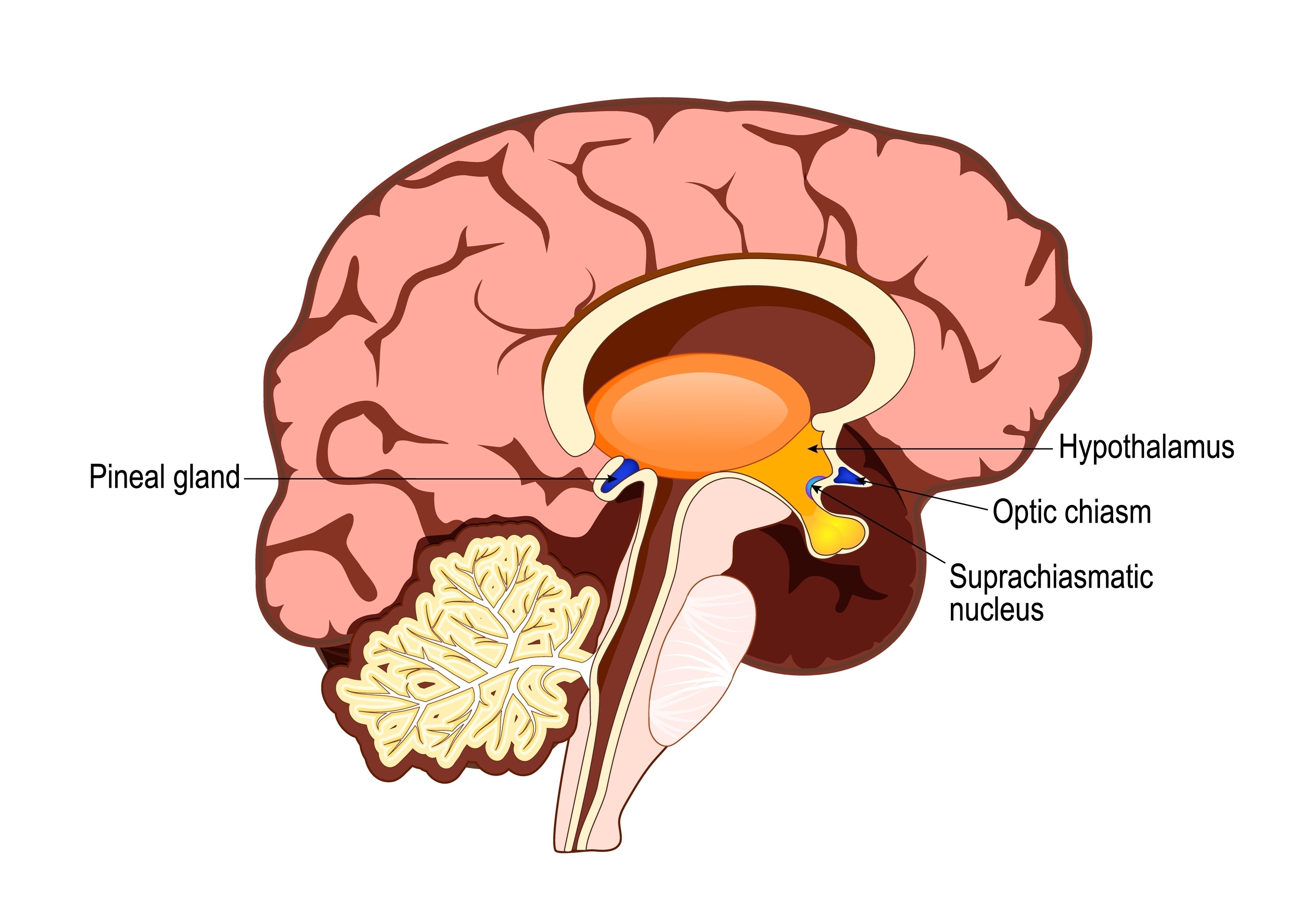
Nestled in the heart of the brain, the pineal gland plays a major role in regulating the circadian rhythm. It is rare for it to be the site of pathologies. Explanations with Dr Caroline Apra, Head of Neurosurgery Clinic at Henri Mondor Hospital.
What is the pineal or epiphysis gland? Where is she ?
The pineal gland, also called epiphysis or epiphyseal gland, is a small cone- or pine nut-shaped endocrine gland located in the middle of the brain, at the back of the midbrain, beneath the surface of the skull. It measures 6mm long and 3mm in diameter.

The pineal gland is often nicknamed the “third eye” because it captures exterior light intensity et regulates our perception of brightness. In his “Treatise on Man”, Descartes even made it the seat of the soul.
What does the pineal gland do in the body?
The pineal gland plays a central role in day/night rhythm regulation by the production of melatonin, a hormone involved in the control of the circadian rhythm and our internal clock. “Released into the bloodstream, melatonin secretion is stimulated at nightfall and inhibited at daybreak. In other words, it allows you to wake up when it is daytime and to sleep when it is dark,” says Dr Caroline Apra.
In practice, the activity of the pineal gland evolves over time since it is at its peak between 3 and 6 years old, then it then decreases, sometimes to the point of disappearing at an advanced age.
Dysfunctions and pathologies of the pineal gland
Pathologies of the pineal gland are very rare. The pineal region may be the seat of totally benign cysts who have been there since birth. In very rare cases, a benign or cancerous tumor can develop. “Since the pineal gland is located in the heart of the brain, the tumor causes accumulation of cerebrospinal fluid (hydrocephalus). It can then no longer circulate normally, which can lead to intracranial hypertension may be responsible for severe headaches, visual problems, nausea, vomiting, sleep problems, drowsiness or even memory problems., explains the neurosurgeon. Most often, tumors of the pineal gland are discovered incidentally, during an imaging test performed for another reason.
How do you know if the pineal gland is not working properly?
The pineal gland is sensitive to light, a lack of brightness can hinder the production of melatonin and thus disrupt sleep.
Scanner, MRI of the brain: examinations of the pineal region
Brain MRI is the gold standard for looking for abnormalities of the pineal gland. In certain cases, the radiologist may decide to inject a contrast product. “If the images are not worrying, the exploration will stop there. On the other hand, when faced with suspicious images, additional examinations can be carried out. First of all, a lumbar puncture to search for tumor markers which allow a diagnosis to be made without having to do a biopsy in the cerebrospinal fluid. In case of doubt, a biopsy will allow us to confirm or refute the cancerous nature of the detected anomaly.develops the specialist.
How to treat a pineal gland abnormality?
In the vast majority of cases, pineal gland tumors are benign and asymptomatic. In fact, no treatment is necessary. MRI monitoring can possibly be implemented to ensure the proper functioning of the pineal gland and that the tumor does not develop into cancer.
If in doubt, a lumbar puncture aimed at analyzing the cerebrospinal fluid as well as a biopsy may be carried out. Finally, if the tumor is very large and causes symptoms, surgery may be offered.
